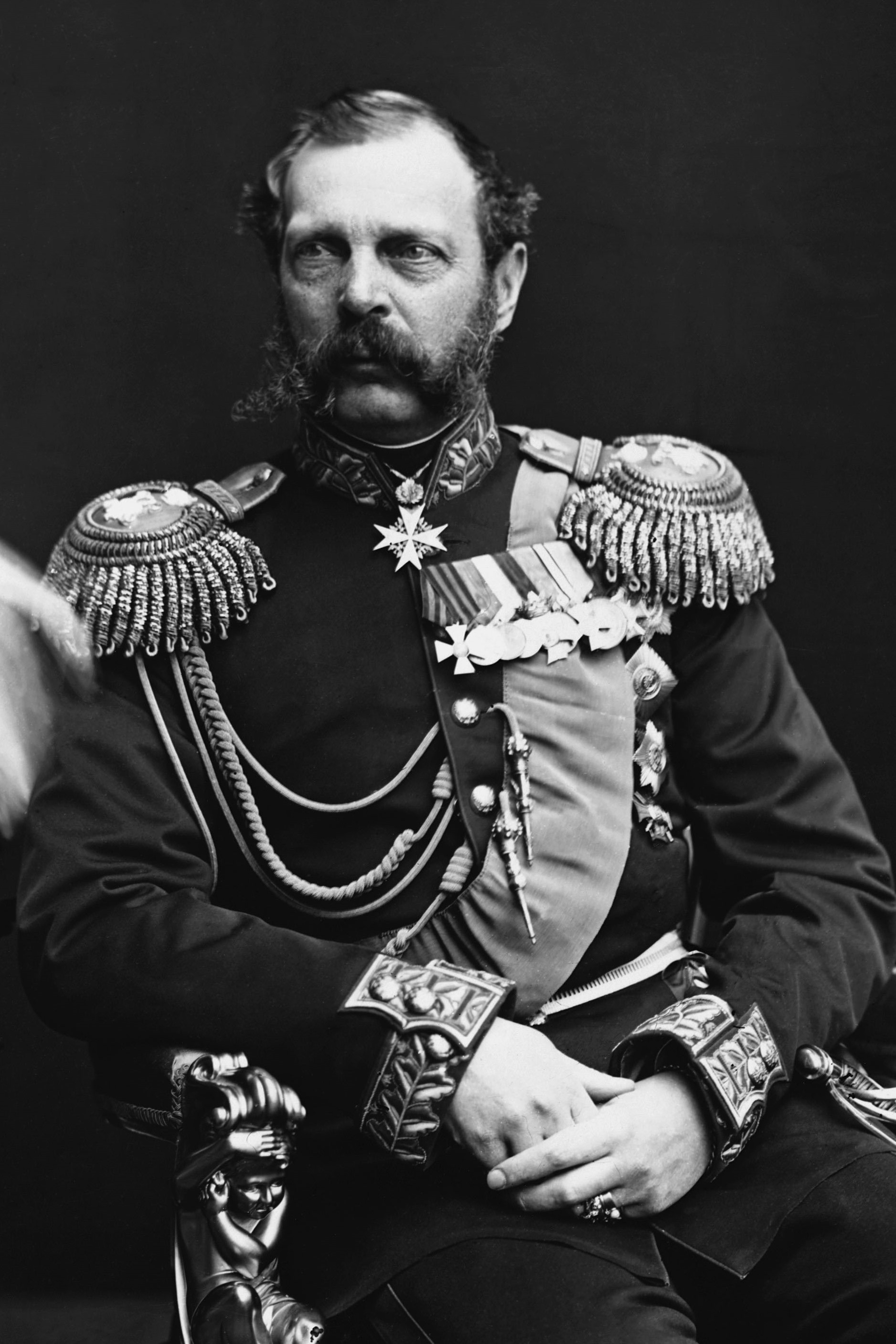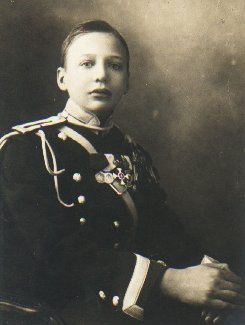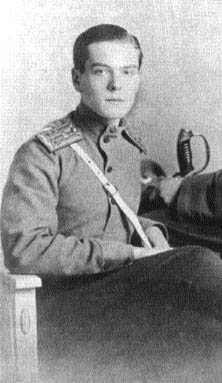by Susan Flantzer
© Unofficial Royalty 2014

Emperor Alexander II of Russia; Credit – Wikipedia
March 13, 1881 (Old Style Date March 1) – Assassination of Alexander II, Emperor of All Russia; buried at the Fortress of Sts. Peter and Paul in St. Petersburg, Russia
Of the twenty Romanov monarchs, five died violent deaths (Ivan VI, Peter III, Paul I, Alexander II, and Nicholas II). On March 13 (Old Style Date March 1), 1881, in St. Petersburg, Russia, Alexander II, Emperor of All Russia was assassinated by a bomb. Born in 1818, he was the eldest child of Nicholas I, Emperor of All Russia and Princess Charlotte of Prussia, known as Alexandra Feodorovna after her marriage. In 1841, Alexander married Princess Marie of Hesse and by Rhine, known as Maria Alexandrovna after her marriage. Although the marriage produced eight children, Alexander had several lovers, the chief one being his long-time mistress Catherine Dolgorukova with whom he had three surviving children. Maria Alexandrovna was frequently ill and died of tuberculosis in 1880. Less than a month after her death, Alexander married Catherine Dolgorukova morganatically. This marriage caused a scandal in the Imperial Family and violated the Russian Orthodox rules regarding the waiting period for remarriage following the death of a spouse. Alexander granted his new wife the title of Princess Yurievskaya and legitimized their children.
When his father died in 1855, Alexander became Emperor of All Russia. He is known as the most reforming tsar since Peter the Great. His foremost accomplishment was the emancipation of the serfs in 1861. In addition, Alexander II reorganized the judicial system, established local self-government called Zemstvo, instituted universal military service in which sons of the rich and the poor were required to serve, ended some of the privileges of the nobility, and promoted higher education in the universities.
A liberal-leaning ruler, Alexander was subjected to several assassination attempts, including two attempts in 1879 and 1880 by The People’s Will (Narodnaya Volya), a radical revolutionary group whose goal was a social revolution. After the failed attempts, a committee of The People’s Will members called March 1 (Pervomartovtsy) began to plan the next attack on Alexander II. The People’s Will was led by Andrei Zhelyabov and his lover Sophia Perovskaya. Zhelyabov was arrested a few days before the planned attack.
On March 13, 1881, Alexander II signed an order creating several commissions, composed of government officials and prominent private individuals, to prepare reforms in various branches of the government. Afterward, he attended church services with the Imperial Family, the usual custom on Sunday. Before Alexander left the Winter Palace for some events, his wife begged him not to follow his usual route home because of the reports of possible terrorist attacks. He promised to return to the palace via the Catherine Canal Embankment instead. Alexander attended a parade at the Michael Riding School and visited his cousin Grand Duchess Catherine Michaelovna. The conspirators had laid dynamite mines in tunnels dug under the Tsar’s usual route. When Sophia Perovskaya saw that Alexander visited his cousin and might return to the palace using a different route, she arranged her co-conspirators along the Catherine Canal Embankment, the most logical alternate route.
Alexander II was riding in a bomb-proof carriage, a gift from Emperor Napoleon III of France. As the carriage turned onto the Catherine Canal Embankment, a bomb was thrown. The carriage was damaged and several onlookers were wounded, but the emperor was unharmed. Next, Alexander II made a mistake that cost him his life. Unaware that another conspirator was leaning against a railing about six feet away, he left the carriage to inspect the damage and check on the wounded people, and a bomb was thrown directly between the emperor’s legs. The noise from the bomb was deafening, smoke filled the air, wounded people were screaming, and the snow was drenched with blood. When the smoke cleared, Alexander II lay mortally wounded, his legs crushed and torn from the blast of the bomb. Alexander asked to be taken to the Winter Palace so he could die there.
As members of the Imperial Family heard the news (and some of them heard the two bombs), they arrived at the Winter Palace. The sight that greeted them was grim. Alexander II’s face and body were intact, but his legs were gone up to his knees. The room began to get crowded as more family members arrived. Alexander II’s eldest son Alexander and his Danish wife Dagmar arrived. Dagmar was still wearing her skating costume and carrying her ice skates as she had planned to go ice skating. Dagmar’s husband stood in disbelief and their eldest son, 13-year-old Nicholas, the future Nicholas II, was clinging to a cousin for comfort. The emperor’s wife Catherine Dolgorukova (Princess Yurievskaya) hysterically ran into the room, threw herself on her husband’s body, kissed his hands, and called out his name. For 45 minutes, those in the room watched as Emperor Alexander II’s life ebbed away. At 3:35 PM, the emperor died, and as the Imperial Family knelt to pray, his wife fainted and was carried from the room, her clothes drenched with his blood.

The assassination of Emperor Alexander II; Credit: Wikipedia
Just the day before he died, Alexander II had completed plans to create an elected parliament and he intended to release these plans within a few days. Perhaps if Alexander II had lived Russia would have become a constitutional monarchy and not been led down the path the country ultimately took. Alexander II’s son and successor, Alexander III, was very conservative and reversed some of the liberal reforms of his father. One of the first things he did as emperor was to tear up his father’s plans for an elected parliament and cancel the order his father had signed the day he died.
Two of Alexander II’s sons met violent deaths: Grand Duke Sergei Alexandrovich was assassinated by a terrorist bomb at the Kremlin in Moscow in 1905 and Grand Duke Paul Alexandrovich (and three other Grand Dukes) was shot by the Bolsheviks at the Peter and Paul Fortress in 1919.
Emperor Alexander II was buried at the Peter and Paul Cathedral in the Peter and Paul Fortress in St. Petersburg next to his first wife.

Tomb of Alexander II (on left) and Maria Alexandrovna, his wife (on right); Photo Credit – © Susan Flantzer
In 1883, construction began on the Church on the Spilt Blood. The church was built on the site of Alexander’s assassination and is dedicated to his memory.

Church on the Spilt Blood in St. Petersburg, built on the site of Alexander II’s assassination; Photo Credit – © Susan Flantzer
This article is the intellectual property of Unofficial Royalty and is NOT TO BE COPIED, EDITED, OR POSTED IN ANY FORM ON ANOTHER WEBSITE under any circumstances. It is permissible to use a link that directs to Unofficial Royalty.
























